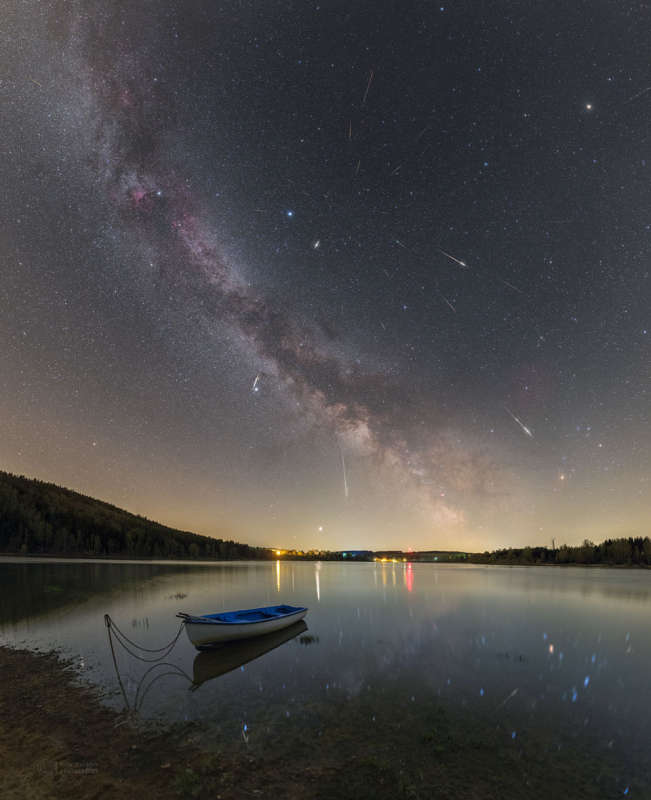Credit & Copyright: Petr Horálek
Explanation:
Where are all of these meteors coming from?
In terms of direction on the sky, the pointed answer is the
constellation of Small Harp (Lyra).
That is why the famous meteor shower that peaks every April is known as the
Lyrids -- the
meteors
all appear to came from a
radiant toward
Lyra.
In terms of parent body, though, the
sand-sized debris
that makes up the Lyrid meteors come from
Comet Thatcher.
The comet follows a well-defined orbit around our
Sun,
and the part of the orbit that
approaches Earth is superposed in front of Lyra.
Therefore, when Earth crosses this orbit, the
radiant point of falling debris appears in Lyra.
Featured here, a composite
image containing over 33 meteors (can you find them all?) from last month's
Lyrid meteor shower shows several
bright meteors that
streaked over a shore of Sed Lake in the
Czech Republic.
Also visible are the bright stars
Vega and
Altair, the planet
Jupiter, and the central band of our
Milky Way Galaxy.
Notable APOD Submissions:
Lyrid Meteor Shower 2020
1999 2000 2001 2002 2003 2004 2005 2006 2007 2008 2009 2010 2011 2012 2013 2014 2015 2016 2017 2018 2019 2020 2021 2022 2023 2024 2025 |
Yanvar' Fevral' Mart Aprel' Mai Iyun' Iyul' Avgust Sentyabr' Oktyabr' Noyabr' Dekabr' |
NASA Web Site Statements, Warnings, and Disclaimers
NASA Official: Jay Norris. Specific rights apply.
A service of: LHEA at NASA / GSFC
& Michigan Tech. U.
|
Publikacii s klyuchevymi slovami:
Lyra - Liridy
Publikacii so slovami: Lyra - Liridy | |
Sm. takzhe:
Vse publikacii na tu zhe temu >> | |
